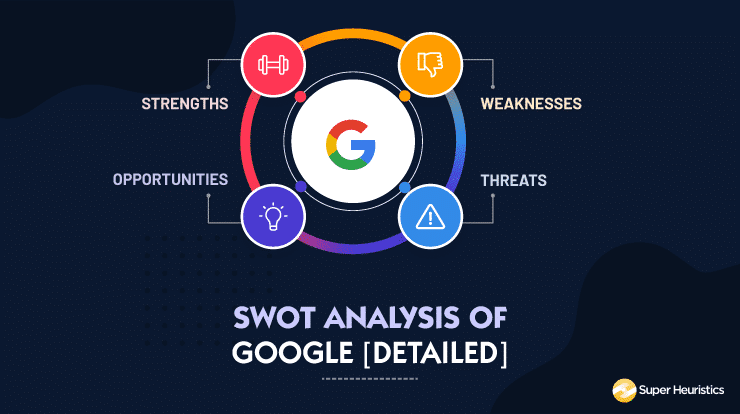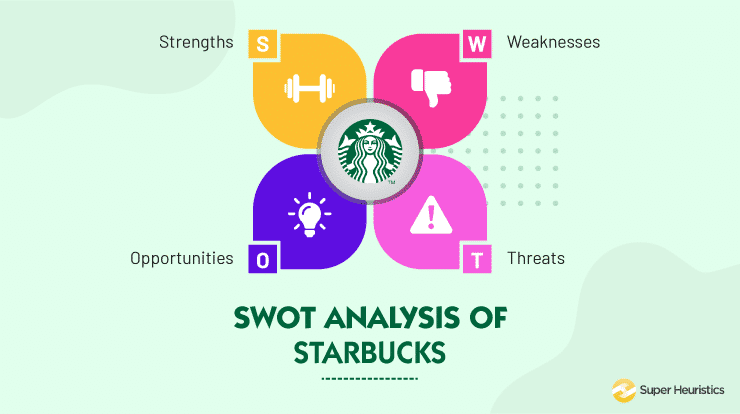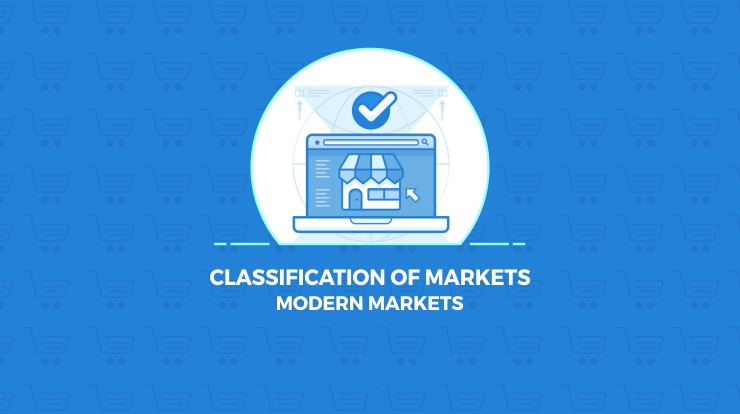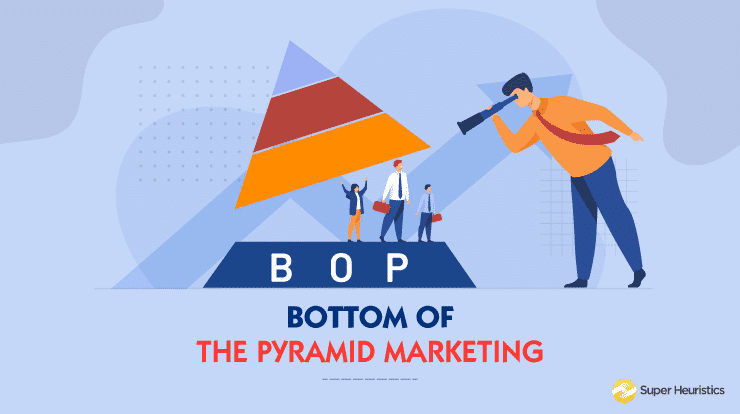
We all know no two persons are the same, so in this vast world containing billions of such people marketing to individuals' needs becomes a challenge. More often than not, marketers tend to focus on their competencies and choose a suitable market. There is one such market with high potential, which forms the base of the world's economic Pyramid and is so niche that we have the bottom of pyramid marketing to cater to their needs.
It became important here to talk about this market segment and why you need to learn about it. Keep reading this article to find out more about the bottom of pyramid marketing, the bottom of the pyramid marketing examples and bottom of the pyramid innovation examples.
What is Bottom of a Pyramid Market?
UNICEF conducted a study and told us that the world 20% enjoys more than 70 per cent of world income. This 20 per cent population is known as the affluent population. In contrast, the rest 80 per cent is known as the Bottom of the Pyramid market.
I know, this piece of information was shocking for me when I first came across it. This also means a lot of marketing effort is directed towards the 20percent as compared to the rest 80 per cent. Let's define our BOP market and learn more about the bottom of pyramid marketing.
Status Quo of Bottom of Pyramid Markets
In economics term, Bottom of Pyramid markets refers to the poorest two-thirds of the human economic Pyramid. It consists of more than four billion people in the world. These markets are often invisible and unorganized.
In economics term, Bottom of Pyramid markets refers to the poorest two-thirds of the economic human pyramid.
The diagram below depicts a typical pyramid containing different groups according to their purchasing power parity.
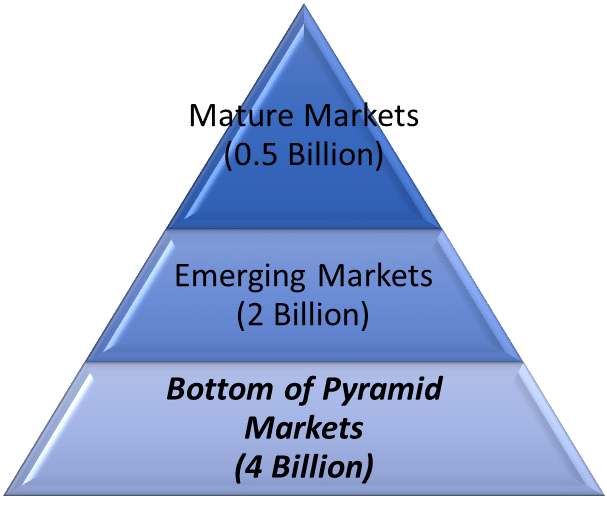
As can be seen, the bottom of the pyramid market is exactly present at the bottom. The emerging markets are the ones which are emerging from the bottom of pyramids and transitioning to the mature markets. The mature markets, on the other hand, has reached a state of equilibrium.
Most of the developing countries are emerging BOP markets. Asia and the Middle East constitute the largest BOP market globally, with over 2.86 billion (83 per cent of whole BOP population) with a purchasing power parity of rupees 17,300 thousand crore or equal to 42 per cent of the entire BOP income.
Considering India's case, the BOP market has over 924 million with a purchasing power parity of rupees 6,550 thousand crores. There are 114 million households in India at the bottom of the Pyramid.
The number is 76 per cent of the rural population and 60 per cent of India's total population. So, suppose a marketer in India is not marketing to BOP. In that case, it is only selling to 60 per cent of the population.
This number becomes vital when the bottom of the pyramid population is spending about 310.5 thousand crore rupees on housing or equal to 48 per cent of India's national housing market.
Hence, if you don't consider the bottom of the pyramid marketing, you are unfortunately ignoring a considerable chunk and many opportunities.
Bottom of Pyramid Marketing
The beauty of marketing lies in the fact that it recognizes the pain points and needs of a particular market and positions itself so that this unmet need is met.
So, we must study the characteristics of the BOP market, consumers in the BOP market, and then move on to how it can effectively leverage for the bottom of pyramid marketing. Let's move on.
Characteristics of the Bottom of the Pyramid Market
The needs of this market are unique as compared to the other top tier markets. They have been neglected in the past, and it's a no brainer that most of their needs go unnoticed. Here are some of the characteristics that define the buying behaviour of our consumer in a BOP market:
Unmet Needs
The people in this market segment are also varied because some of their needs are similar to the other market segment, yet some needs are unique to them.
For example, they have everyday needs like an efficient transportation system, water, electricity access, health services etc. But their needs for electronics, apparels, entertainment may vary from the others.
There is a higher chance that people in the BOP are willing to pay for it, but they may not have access to the same.
Subsistence Livelihood
Its is defined as the minimum resources one needs for their basic survival needs. The people in the BOP are dependent on informal sectors and as is highly volatile are living hand-to-mouth.

Source: economictimes.in
Most of the products generated in this market segment like agriculture goods, handicrafts, labour, etc. are unable to fetch a fair price and are highly prone to exploitation by the middlemen.
Poverty Penalty
It can be explained as the poor segment's excessive price against the price paid by the rich for the same goods and services.
For example, BOP people borrow money from informal sources at a really high rate because their access to organized banking is highly limited. This charging of high-interest rate can be seen as the poverty penalty.
After learning about this market's characteristics, let's move on to the next important aspect of bottom of pyramid marketing -The consumers of the bottom of the Pyramid.
Consumers at BOP
There are a few characteristics which are common to all the consumers in the BOP market and are:
Price-Sensitive
Needless to say, the market segment at the bottom will not have a large disposable income and is highly price-sensitive to the products and services available. An example of this case is dalda ghee's preference over cow's milk ghee due to the price difference.
Value-Conscious
The consumer will also pay more to the product if it is providing more value to the consumer. For example, Vim soap's sale with a plastic coating increased as the consumers perceived this soap will last more than other soaps.
In short, the consumers want to drive maximum utility from a product.
Brand-Conscious
It is a common misconception that this market segment is not brand conscious. The consumer does, in fact, pay a lot of value to the brand. It can be seen in the case of Chotukool, which was not perceived well by the consumers of this segment, even though it was made specifically for their needs.
Hence, in conclusion, the consumer in this market is price-sensitive, brand conscious and tries to obtain maximum utility from a product.
Its time we move on to the most critical aspect- Bottom of the pyramid strategy.
Bottom of the Pyramid Strategy
Strategizing for the Bottom of the Pyramid Market is essential to bottom of pyramid marketing.
After analyzing our market behaviour and consumer characteristics, it is imperative to move towards successful marketing strategies.
There are numerous Companies serving the Bottom of the Pyramid are quite successful. Let's learn from them.
Reaching out to the BOP
Reaching out or seeking out your BOP market can be done through 3 A's- Availability, Affordability and Accessibility.
Any business operating in the BOP market should ensure a distribution system specifically meant for the Bottom of the pyramid market as per their requirements.
Companies have to offer products that resonate well with the BOP market. The people in the market should be able to afford such products.
There are large consumers in the BOP market, but the per head consumption is small. This means that if a company is marketing, it has to market the products in smaller quantities to a wider audience. The scalability is a major issue in this case.
Creation of New Products and Services
A product meant for top tiers will not necessarily be taken well by your bottom tier. Firms should come up with products that can provide better utility and performance at an affordable price.
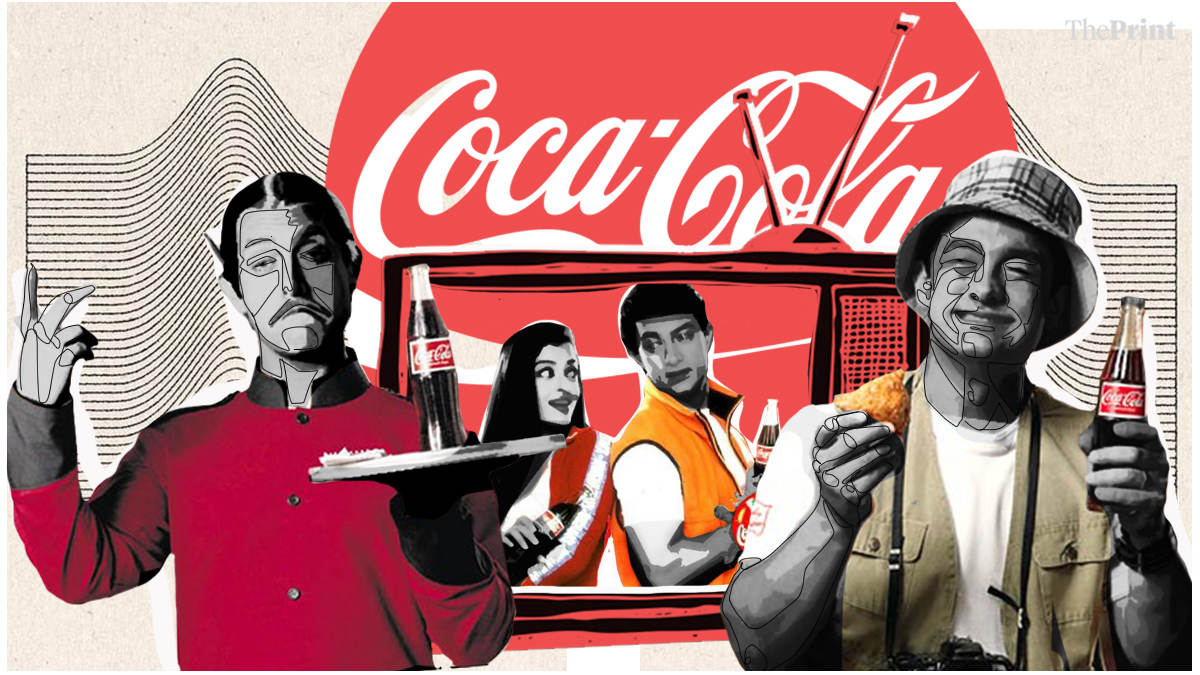
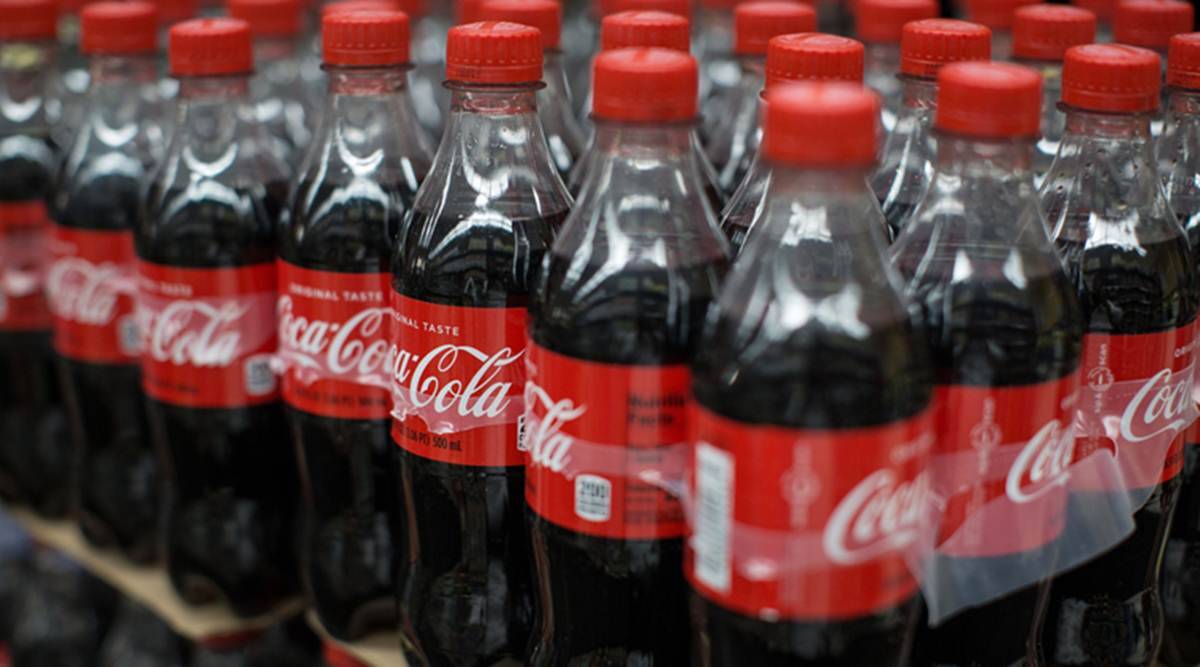
Source: print.in
To penetrate India's rural market, Coca-Cola launched its Coca-Cola soda drink in a 5 rupee bottle after observing that their rural consumers were buying 10 rupee bottle and 2 people were sharing them. They also created a campaign with Aamir Khan with a slogan of 'Thanda Matlab Coca-Cola."
Creation of a New Business Model
A new business model is imperative for the new market segment owing to its unique demands and unique characteristics. The existing models will not prove efficient at the bottom of pyramid marketing.

The banking sector in India has been catering to the bottom of the pyramid market by created banks, specifically for rural people (Grameen banks) and co-operative banks for people in the urban sector.
New Distribution Channels
Bottom of pyramid marketing differs from marketing in other tiers as this sector is highly informal and are more scattered. Suppose companies continue with the existing distribution network. In that case, their per-unit costs will be high, and the end product will be costly.
Hence, it is imperative to have a new and unique distribution system that will capitalize on the BOP market's strengths and create value for them.


Source: amazon.in
Two brand names Pureit and Aquasure are a great example of changing the bottom of pyramid marketing's distribution system. The company has abandoned its usual direct selling to selling through retail channels in BOP markets in India and other countries.
Partnering with Other Organizational Structures
Various Non-government organizations and government organizations are working in the Bottom of the Pyramid market. If private sector businesses extend their hands with these organizations, together they will bring holistic results.
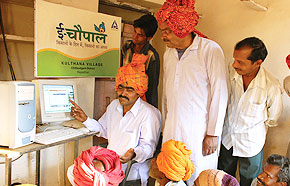
Source: Itcportal.in
Various examples of such initiatives are such as the ITC e-chaupal catering to agri-businesses in India.
Investing in Best Technologies
Leveraging technology to create value in the existing business model helps firms in the bottom of pyramid marketing.

Source: Aravind.org
The best bottom of pyramid innovation example is the Aravind eye clinics. They have leveraged technology and created a new business model where surgeries are performed on a manufacturing line have helped them improve scalability and provide eye surgeries to India's population.
Conclusion
In this article, we learnt about the bottom of pyramid marketing and its various constituents-
- The 80 per cent of the population is known as the Bottom of the Pyramid market. The name suggests it is at the bottom of the Pyramid and only constituents to about 30 per cent of the spending.
- Bottom of the pyramid market would be any market where an individual income lies below $1500. It consists of more than four billion people in the world.
- The market is characterized by the fact that people want maximum utility and highly price-sensitive.
- Bottom of the pyramid marketing involves meeting the unique needs of their constituent population.




